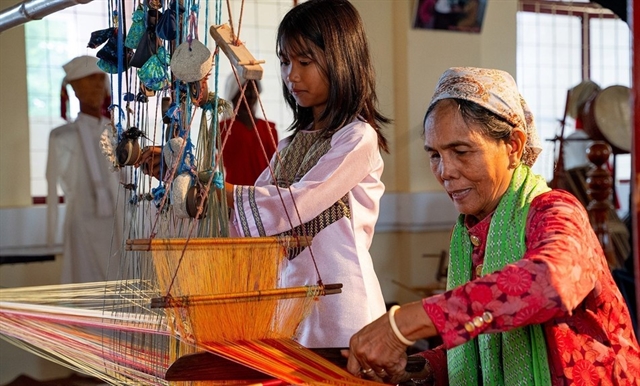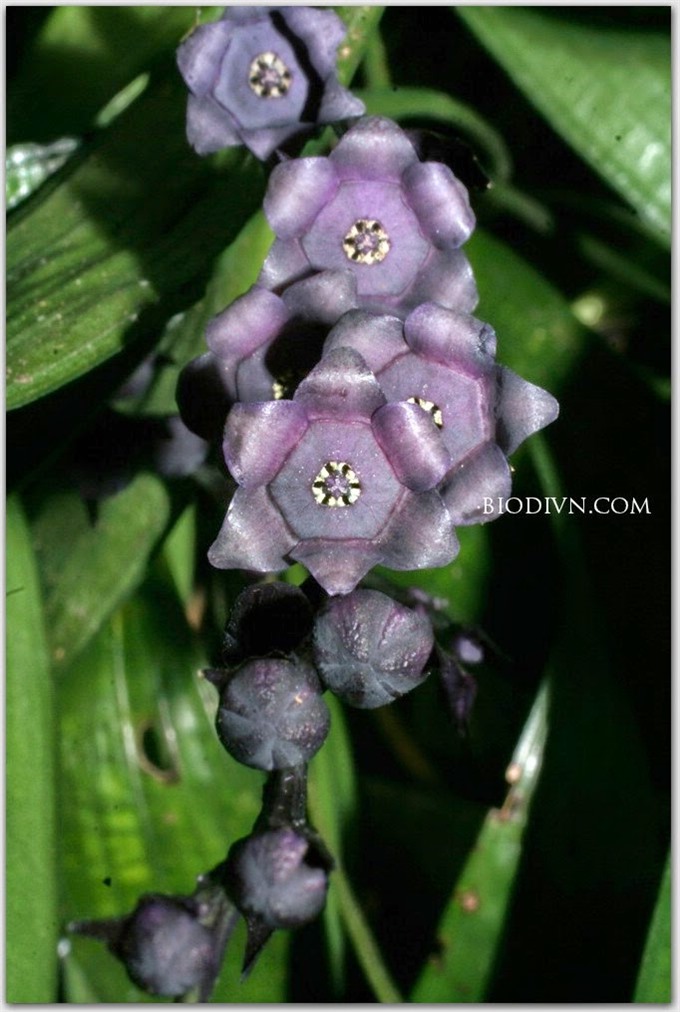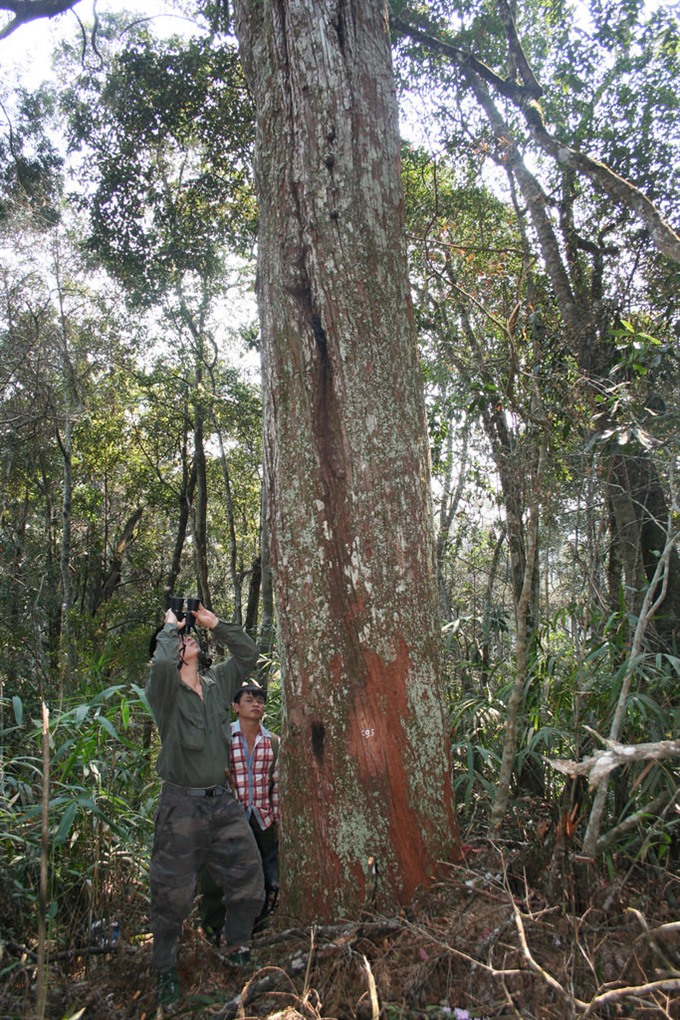 Features
Features

Until now, Phạm Văn Thế has made public more than 50 researches and published a book in Germany, and dozens of scientific reports in the English language.
 |
| Spreading the word: Phạm Văn Thế has made public the results of more than 50 research projects, published a book in Germany and dozens of scientific reports in English. |
By Minh Thu
Phạm Văn Thế calls himself a strange man because he spends more time in the forest than at home.
This is not, however, surprising to those who know him. A biological expert, he spends much time and effort working on flora and fauna-related projects and conducts research on how to preserve endangered species.
Until now, Thế has made public the results of more than 50 research projects, published a book in Germany and dozens of scientific reports in English.
He and his colleagues at the Institute of Ecology and Biological Resources have discovered 13 new botanical species, several of which have been named after him, such as Gastrodia Theana (family Orchidaceae), Tupistra Theana (family Asparagaceae) and Theana Vietnamica (family Orchidaceae).
 |
| Find it, name it: Gastrodia Theana (family Orchidaceae) is one of the species named after Thế. VNS Photo Phạm Văn Thế |
Strong commitment
Thế was born in a mountainous region with large forest cover in the northern province of Hải Dương. Since childhood, he has lived closely with nature and has nurtured a special love for fauna and flora. Thế’s desire to understand more about trees and protect them gradually developed in his mind.
When Thế grew up and witnessed the forest area reducing and trees falling by the axe, he became determined to preserve plants and conduct research on forestry.
After graduating from the College of Forestry, Thế began working for the Institute of Ecology and Biological Resources in 2003, a role he continues until today.
“I want to spread my love for forests among more people and I urge them to raise awareness about protecting forests and the environment,” Thế said.
At the beginning, he faced many difficulties as the flora in the forests is extremely diversified. As a freshman, he lacked both knowledge and experience.
“The person who inspired and helped me most in my career was my teacher, Nguyễn Tiến Hiệp, PhD, the institute’s director, who has discovered various kinds of ’slipper’ orchids (family Orchidaceae) in Việt Nam,” Thế said.
“He guided me during those first steps, from simple things like arranging specimens in the right order according to their families, to hard and difficult work on field trips.”
Thế still remembers his first accident. It happened during a trip to the forests in Sơn Kim Commune in the central province of Hà Tĩnh in 2004. He took a wrong step and landed on a thorny bush. His skin became itchy and started burning, which eventually resulted in a fever.
Another time, hiking through a forest in the northern province of Bắc Kạn, Thế slipped and just managed to save himself from plummeting off a cliff by hanging onto the edge. However, the sharp rocks cut his hands. During that trip, he gained knowledge of local wild botanical species, rediscovering a medicinal herb that according to the locals’ experience can stop bleeding.
“I have encountered snakes several times, but I don’t fear them because during the day, they often slither away and hide from humans,” Thế said. “They just attack if we harm or threaten them or their nests.”
Flora diversity
"The field trips don’t just provide practical knowledge, but also open up the wonderful world of nature in front of our eyes," Thế said.
“Each trip brings in me a special emotion. I’m always curious about nature and eager to discover primeval forests with diversified flora and fauna.”
Thế and his colleagues have visited many forests around the country to protect endangered species. Among plants, they have succeeded in protecting the Vietnamese golden cypress (Xanthocyparis vietnamensis) in the northern province of Hà Giang.
The plant was found in 2002, and listed among plants that were at a high risk of going extinct.
The experts multiplied the plant through experiments, and then grew saplings in their natural state.
The Việt Nam Centre for Plant Conservation took over the project and reported that the saplings are currently 3-5m high and growing well, according to Thế.
“In the second part of the project, we handed the saplings over to locals to grow in their gardens. That’s the way to get people involved in protecting plants. Now, botanical experts and locals are joining hands to grow trees.”
Thế is founder and co-administrator of the website biodivn.com, on which he and his colleagues post reports and information about Vietnamese biology aimed at attracting the public’s attention to wildlife.
“Protecting wildlife and the eco-system is not the work of a single individual or organisation, it needs the involvement of the community,” he said.
Thế’s daughter is inspired by his love for nature through the photos he has taken during field trips. He told her about the “silent forest”, meaning those forests in which animals are being eradicated. He hopes that one-day, she and her friends will address this issue seriously and continue with his work. VNS
 |
| Hidden flora: A flower of wild garlic, Tupistra Theana (family Asparagaceae). VNS Photo Phạm Văn Thế |
 |
| Into the forest: Phạm Văn Thế and a co-worker on a field trip. |




